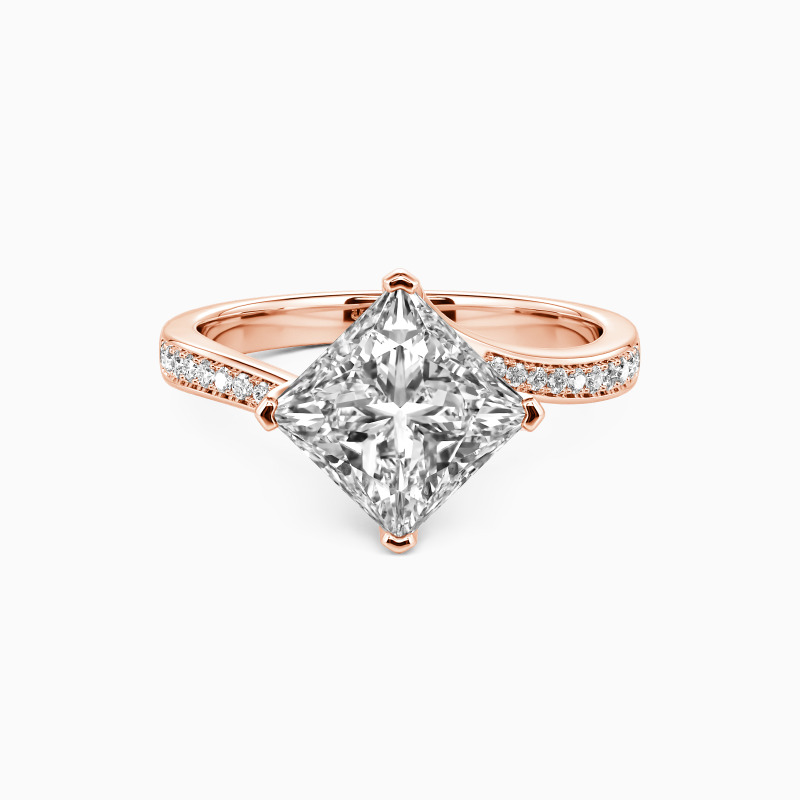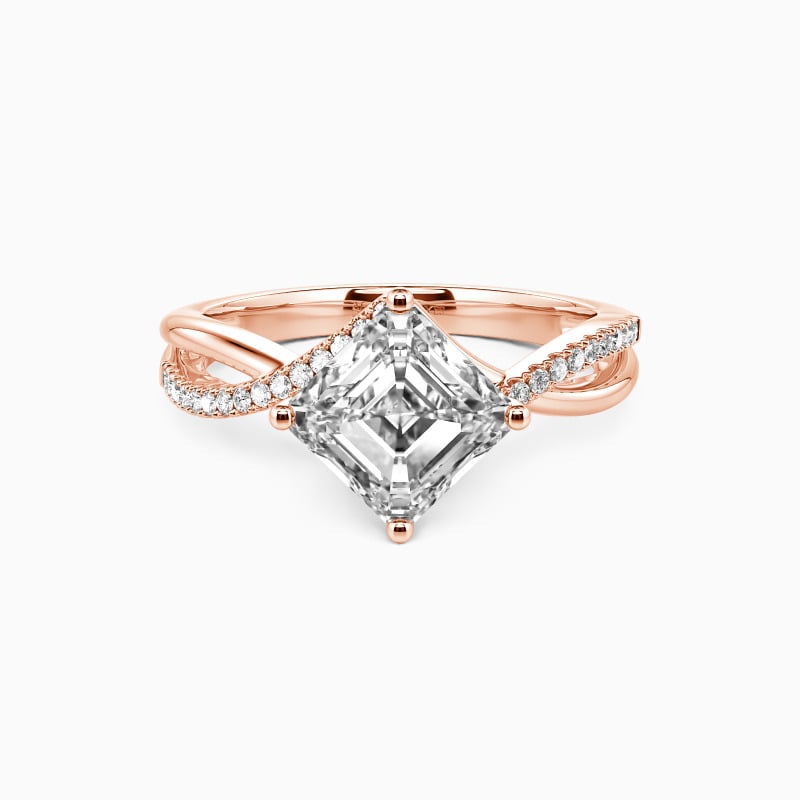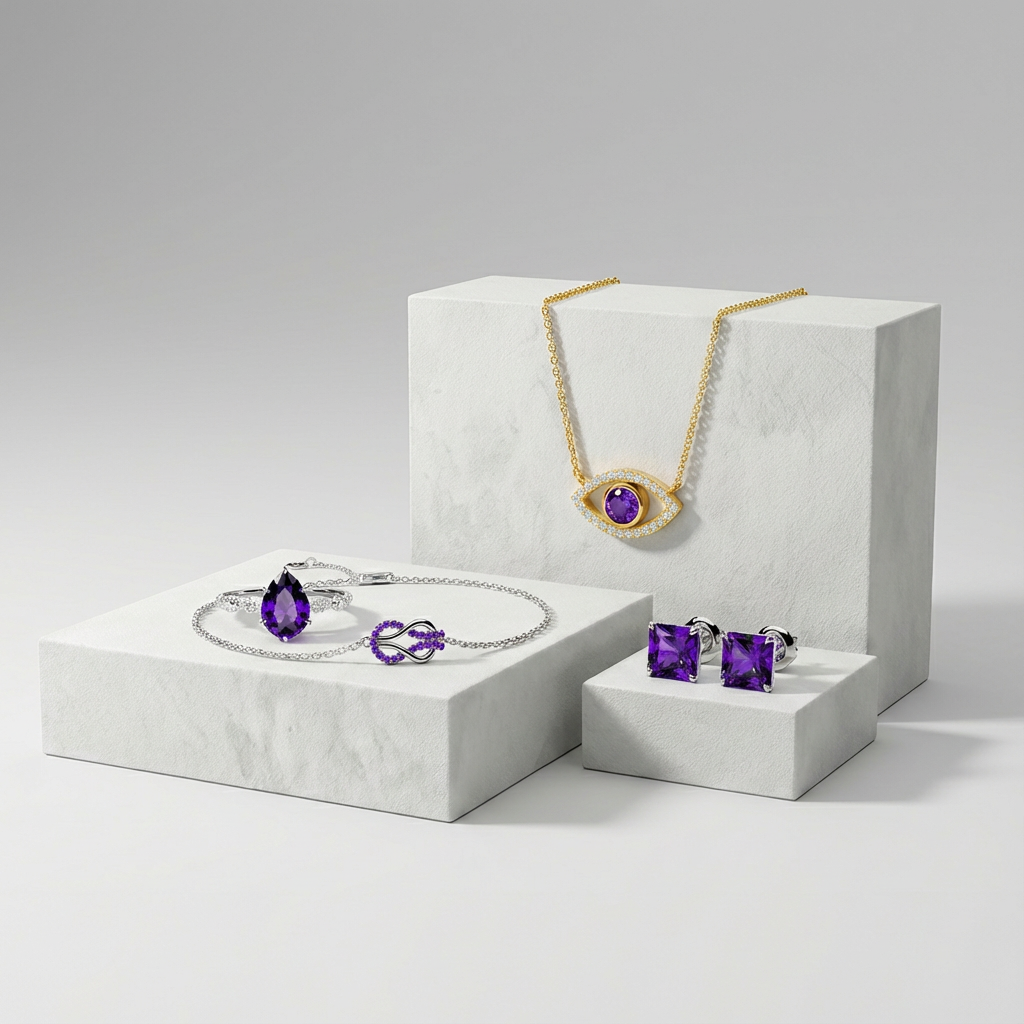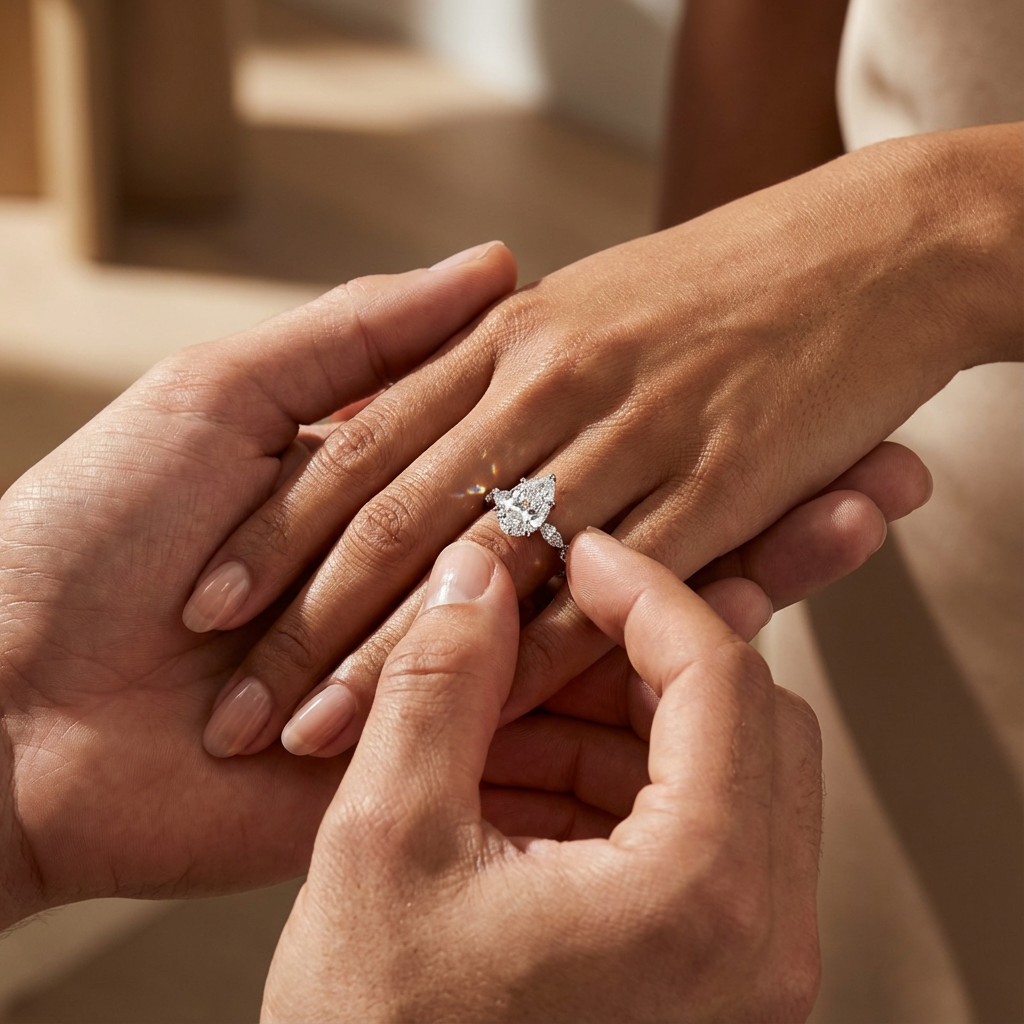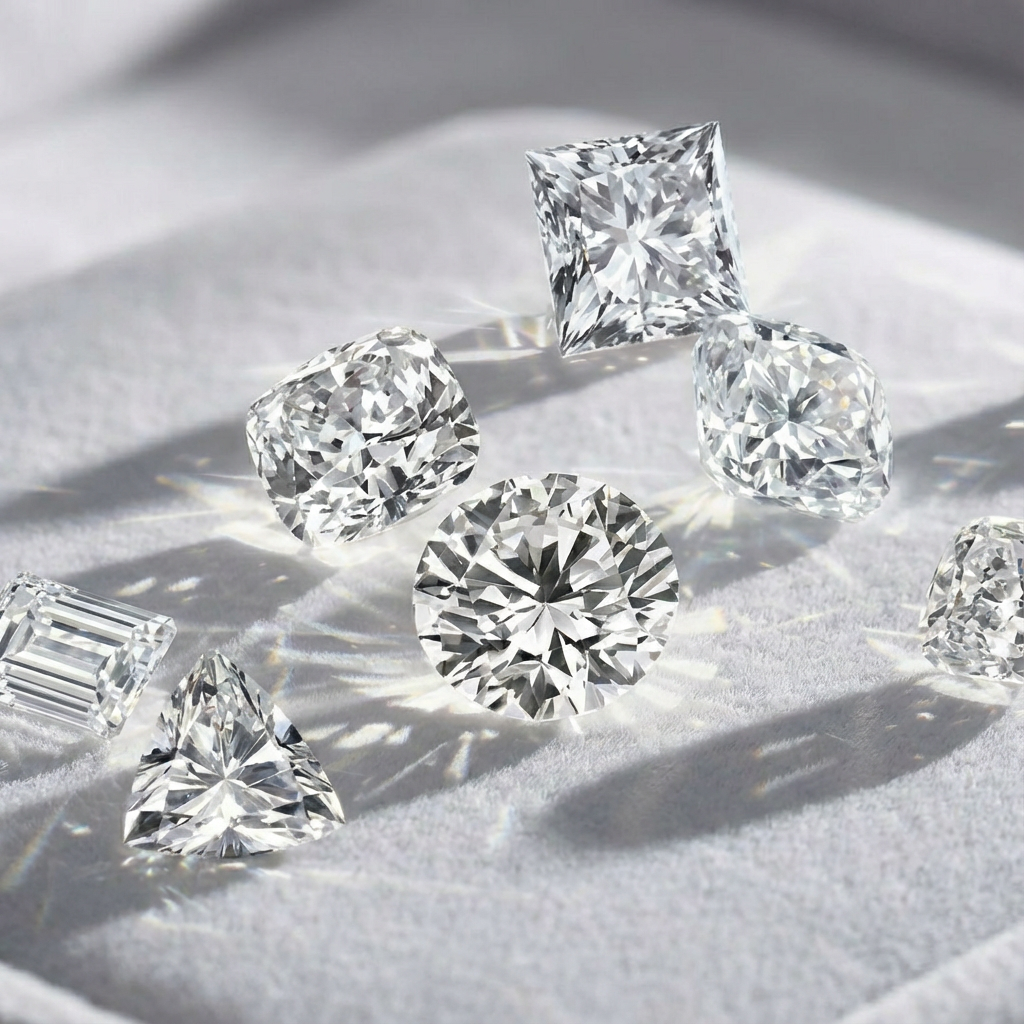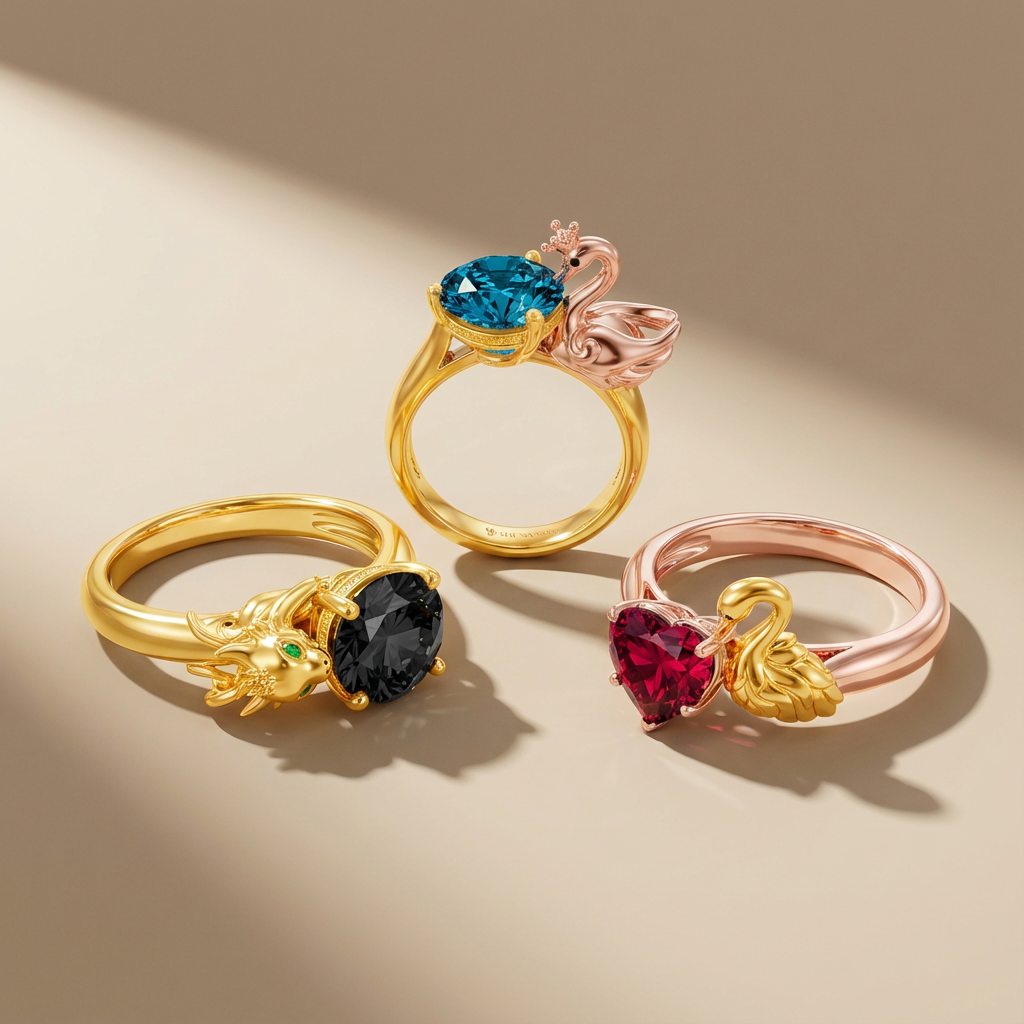The princess cut and asscher cut are two of the most popular styles for engagement rings. Both exhibit square or rectangular forms, yet they differ in their cutting techniques and resultant aesthetics. Today, we will explore the distinct features of the princess cut and asscher cut, compare their differences, and help you decide which might be the best choice for you.
The Princess Cut
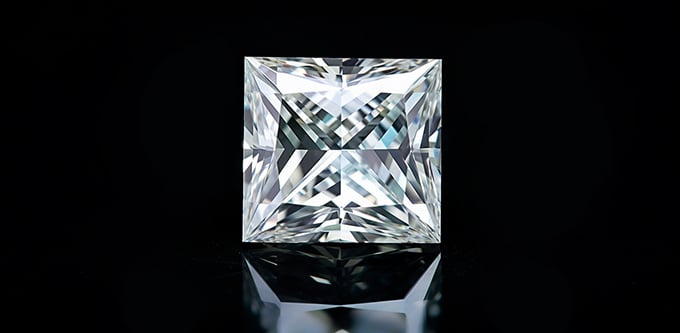
Introduced in the 1980s, the princess cut is a modern favorite. It is known for its unique square shape and sharp, uncut corners. A special technique creates this cut, which forms between 58 and 76 facets. Consequently, it leads to exceptional light dispersion and is one of the most brilliant stone cuts. Meanwhile, the side profile of a princess-cut stone resembles a pyramid. The top part represents the table of the stone, while the bottom narrows to a point. This design contributes to its overall brilliance. The princess cut is popular for its clean, geometric lines and high sparkle.
The Asscher Cut
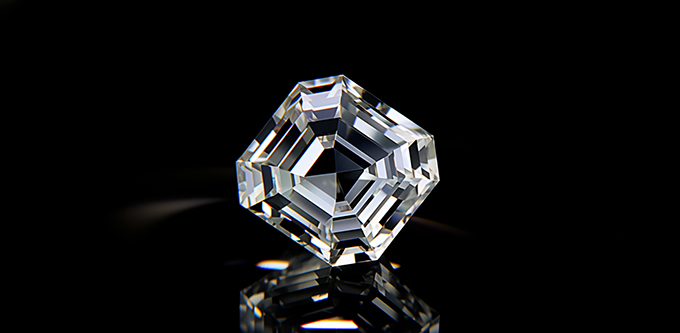
Introduced in 1902 by the Asscher Brothers of Holland, the asscher cut is a classic choice. It’s popular for its vintage elegance. Its defining features are a square shape and deeply trimmed corners, which create an octagonal appearance. This cut is achieved through a step-cut process that emphasizes clarity over brilliance. When viewed from the side, it reveals a series of concentric squares. This creates a “Hall of Mirrors” effect, lending the cut a unique depth and allure. The asscher cut, however, makes imperfections and colors more noticeable, requiring higher-quality rough diamonds.
Princess Cut vs. Asscher Cut

- Shape: The princess cut is typically square or slightly rectangular, while the asscher cut is a square with deeply trimmed corners, giving it an almost octagonal shape.
- Cuts and Facets: The princess cut is known for its sharp, modern lines and has more facets (usually 58-76), which contributes to its high degree of brilliance. The asscher cut, on the other hand, is characterized by its step-cut facets, which are fewer in number (usually 58) and contribute to its distinctive, understated shine.
- Fire and Brilliance: The princess cut, with its many facets, maximizes fire and brilliance, leading to a vibrant display of sparkle and color. Conversely, the asscher cut, characterized by fewer facets, presents less fire and brilliance but offers a unique, understated elegance with its hall-of-mirrors effect.
- Scintillation: Scintillation refers to the sparkle a diamond produces when it is moved in the light. The princess cut’s many facets and brilliant cut style create a lot of scintillation. The asscher cut, with its fewer facets and step cut style, has less scintillation but a more distinctive play of light and dark areas, often referred to as a “windmill” pattern.
Which Is Better?
Choosing between princess cut and asscher cut ultimately comes down to personal preference. If you prefer a modern, geometric design and a brilliant sparkle, the princess cut would be an ideal choice. Conversely, if you’re drawn to vintage designs and prefer a diamond with depth and sophistication, the asscher cut would be more suited to your style.
Both the princess-cut and asscher-cut diamonds are exquisite in their own right, offering unique characteristics that cater to different tastes. No matter which cut you choose, you’ll select a piece of fine jewelry that will stand the test of time, just like the love it represents.

